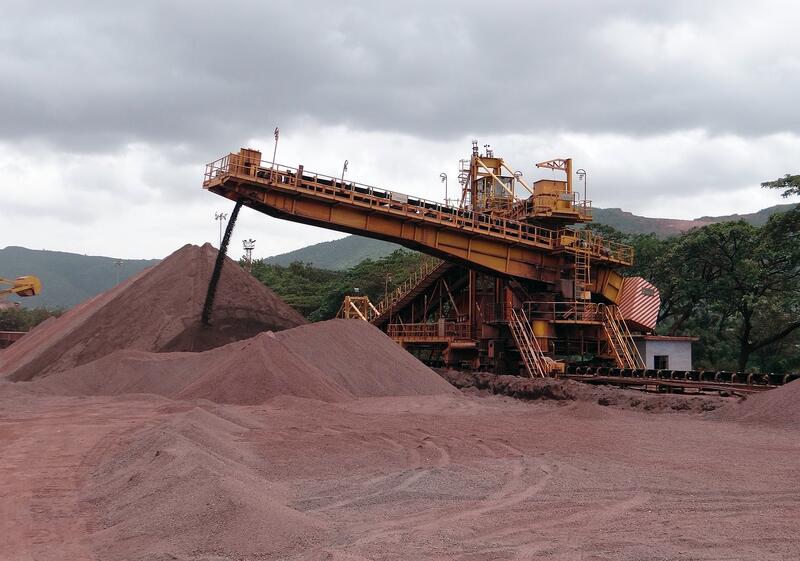Towards a Cleaner Mining of iron ores: Decarbonization Approaches
This article explores the decarbonization approaches that can be employed to achieve cleaner mining of iron ores, reducing the carbon footprint of the industry.

The mining of iron ores is an essential industry that provides raw materials for the production of steel, which is used in various applications such as construction, transportation, and manufacturing. However, the mining of iron ores is also a significant contributor to carbon emissions, which are a primary cause of climate change. Decarbonisation in the mining of iron ores sector is, therefore, a critical step towards reducing carbon emissions and mitigating the impacts of climate change. This article aims to explore decarbonisation in the mining of iron ores sector, including its importance, sources of carbon emissions, strategies for reducing carbon emissions, challenges, and implications.
What is Decarbonisation in the Mining of Iron Ores Sector, and Why is it Important?
Decarbonisation refers to the process of reducing or eliminating carbon emissions from various sectors, including the mining of iron ores. Decarbonisation is essential because carbon emissions are a significant contributor to climate change, which has adverse effects on the environment, human health, and the economy. The mining of iron ores is a carbon-intensive industry that produces carbon emissions through various processes, such as transportation, energy consumption, and chemical reactions. Decarbonisation in the mining of iron ores sector is, therefore, critical to reducing carbon emissions and mitigating the impacts of climate change.
The Main Sources of Carbon Emissions in the Mining of Iron Ores Sector
The mining of iron ores is a carbon-intensive industry that produces carbon emissions through various processes, including:
- Energy consumption: The mining of iron ores requires significant energy consumption, which is mainly derived from fossil fuels such as coal, oil, and gas. Energy consumption in the mining of iron ores sector accounts for a significant portion of carbon emissions.
- Transportation: The transportation of iron ores from mines to processing plants and from processing plants to steel mills requires significant energy consumption and produces carbon emissions.
- Chemical reactions: The processing of iron ores into steel involves various chemical reactions, such as the reduction of iron ores using carbon, which produces carbon dioxide as a byproduct.
Strategies for Reducing Carbon Emissions in the Mining of Iron Ores Sector
There are several strategies for reducing carbon emissions in the mining of iron ores sector, including:
- Renewable energy: The use of renewable energy sources such as solar, wind, and hydroelectric power can significantly reduce carbon emissions in the mining of iron ores sector. Renewable energy can be used to power mining equipment, processing plants, and transportation.
- Energy efficiency: Improving energy efficiency in the mining of iron ores sector can reduce energy consumption and carbon emissions. This can be achieved through the use of energy-efficient equipment, processes, and technologies.
- Carbon capture and storage: Carbon capture and storage (CCS) involves capturing carbon dioxide emissions from industrial processes and storing them underground. CCS can significantly reduce carbon emissions in the mining of iron ores sector.
- Circular economy: The circular economy involves reducing waste and maximizing the use of resources. In the mining of iron ores sector, the circular economy can be achieved through the recycling of steel and the use of scrap steel in steel production.
Challenges Facing Decarbonisation in the Mining of Iron Ores Sector
Decarbonisation in the mining of iron ores sector faces several challenges, including:
- Cost: Decarbonisation strategies such as renewable energy and carbon capture and storage can be expensive to implement, which may deter some companies from adopting them.
- Technology: Some decarbonisation strategies such as carbon capture and storage are still in the early stages of development and may not be commercially viable.
- Infrastructure: The implementation of decarbonisation strategies such as renewable energy may require significant infrastructure investments, such as the construction of solar and wind farms.
- Regulation: The lack of regulation or incentives to reduce carbon emissions in the mining of iron ores sector may hinder decarbonisation efforts.
Implications of Decarbonisation for the Mining of Iron Ores Sector
Decarbonisation in the mining of iron ores sector has several implications, including:
- Environmental benefits: Decarbonisation can significantly reduce carbon emissions in the mining of iron ores sector, which will have positive environmental impacts.
- Economic benefits: Decarbonisation can create new business opportunities and jobs in the renewable energy and carbon capture and storage industries.
- Social benefits: Decarbonisation can improve the health and well-being of communities near mining operations by reducing air pollution and other environmental impacts.
- Competitive advantage: Companies that adopt decarbonisation strategies may have a competitive advantage in the market by meeting the growing demand for sustainable products and services.
Conclusion
Decarbonisation in the mining of iron ores sector is critical to reducing carbon emissions and mitigating the impacts of climate change. The main sources of carbon emissions in the mining of iron ores sector are energy consumption, transportation, and chemical reactions. Strategies for reducing carbon emissions in the mining of iron ores sector include renewable energy, energy efficiency, carbon capture and storage, and the circular economy. However, decarbonisation in the mining of iron ores sector faces several challenges, including cost, technology, infrastructure, and regulation. The implications of decarbonisation for the mining of iron ores sector include environmental, economic, social, and competitive advantages.